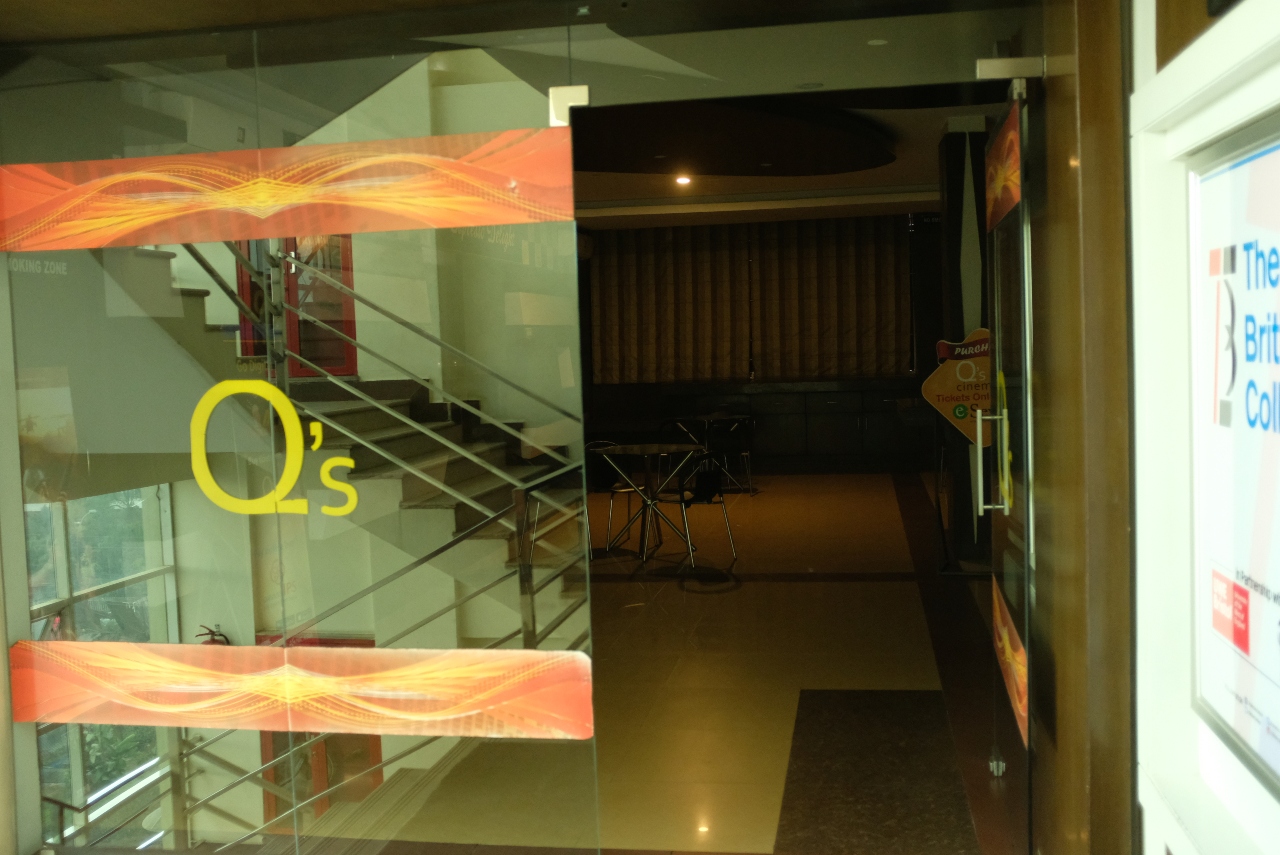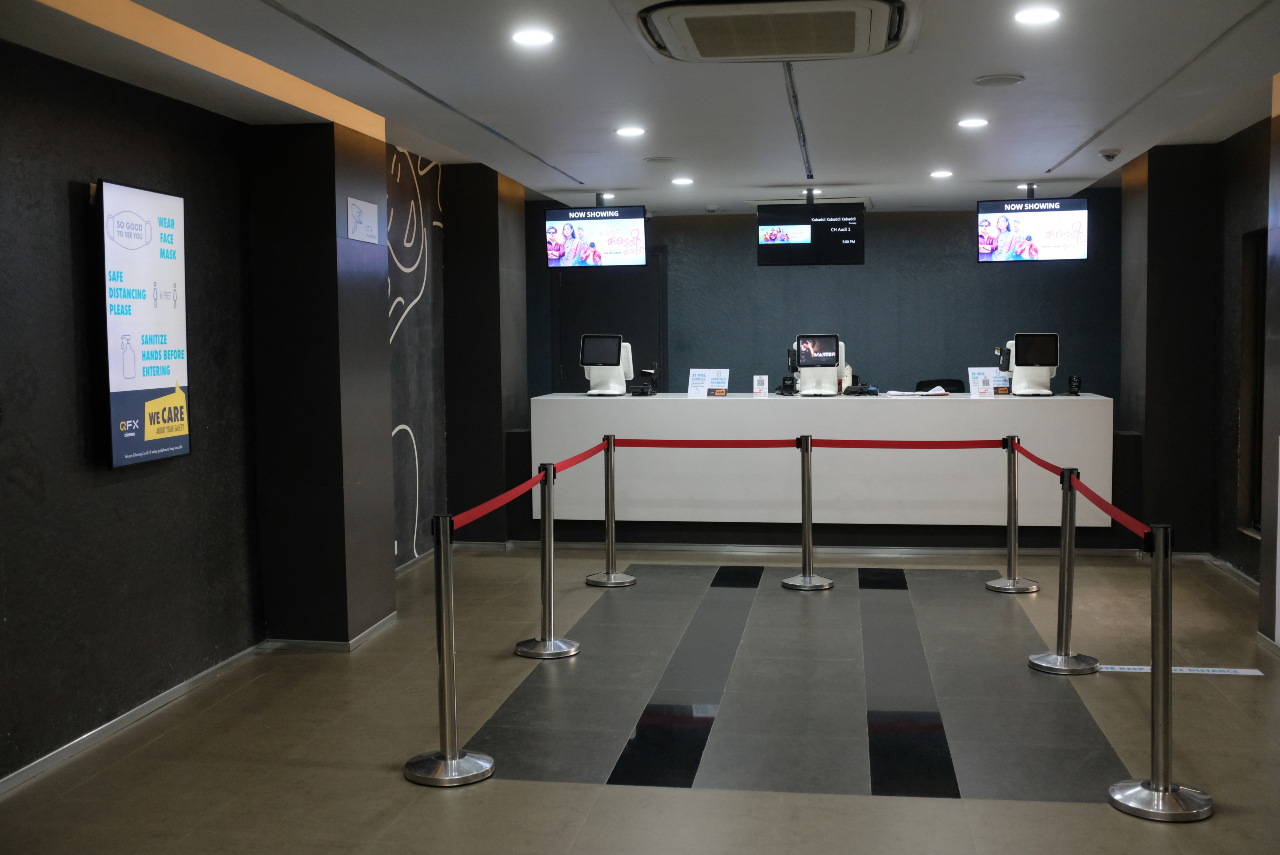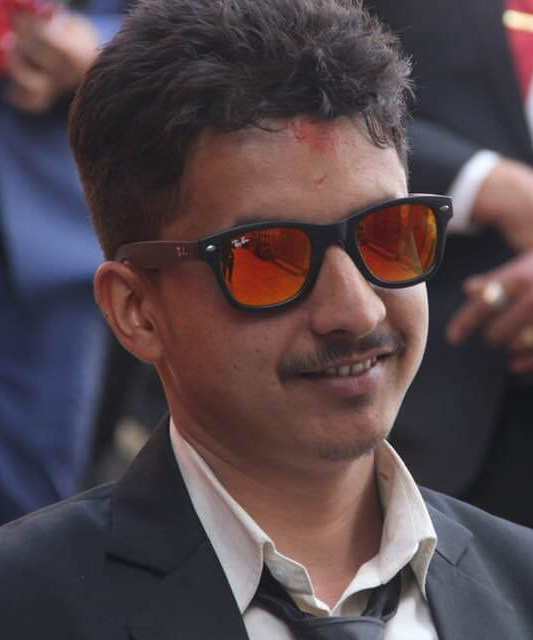Netrakart: Through clear lenses
As children these days are constantly hooked to this or that gadget, their eyes are often weak, sometimes considerably so. Yet this problem with perhaps the most sensitive organs in their body is often ignored.
When Baibhav Pandey, 27, first heard about a young boy being prescribed a negative six vision correction on his very first checkup, he knew there was a problem. “During my school years, I had a bench-mate who always had trouble seeing the board. We used to give him our notes to copy from,” Pandey tells ApEx. “The further back he would be seated in the class, the more he’d squint. This went on for months and we simply considered it normal.”
_20210311132537.jpg)
To this day, ophthalmologists and opticians are generally consulted only when problems go from uncomfortable to unbearable.
It was to tackle this issue that Pandey along with another founder, who’s chosen to remain anonymous, launched Netrakart. Starting out as a simple website for ordering lenses in its planning phase, Netrakart has now evolved into a proper eye healthcare service provider.
What makes Netrakart unique are its three main services—prescription eye-wear orders, home try-on and home eye checkup.
As one of Nepal’s first prescription-based eyewear e-commerce, Netrakart makes buying glasses convenient. With free login on its website, one can simply enter their lens prescription, pick a frame and confirm order. Another noteworthy feature is its impressive range of frames. The collection, sectioned into premium and economy classes, includes typical plastic frames to coveted brand frames from Gucci, Cartier and Tom Ford, with prices ranging from Rs. 300-400 for economy frames to Rs 5,000 or above for premium frames. Likewise, the economy lens consists of simple blue-ray blocking formula while premium lens include products from the likes of Crizal and Hoya.
_20210311132545.png)
Home try-on, true to its name, allows one to order up to five different style of frames and pick the one that fits their facial structure, with the customers getting five days to make a decision. The total price for this service is Rs 25, Rs 5 for each frame.
Following this is perhaps the most notable of Netrakart’s services, the home eye checkup. In partnership with Vision Concern Optical, the company brings an authentic eye clinic to your doorstep. Along with its own assistant, the company sends an optometrist for examination. The assistant carries an equipment bag which includes the trial lens set, ophthalmoscopy, retinoscopy, vision chart and a measuring tape. After the setup, the examination that follows is similar to that in a clinic. There are questions of comfort, talks about vision chart and a prescription at the end, according to requirement. If the examination calls for a hospital visit, Netrakart’s website allows you to book an appointment at Matrika Eye Center.
Inside the Ring Road, the price of home eye checkup is Rs 400 for a person. For more than one person in the family needing examination, it’s Rs. 300 per person. Outside the Ring Road, the price for a single checkup is Rs 600, and for two or more, it’s Rs. 400 per person. This service is limited inside the Kathmandu valley for now.
So far, the biggest struggle for Netrakart has been making customers believe in the authenticity of business. “Many are still hesitant to trust a service that comes from an online portal,” Pandey says. “They question the equipment used, the doctor’s credibility and whether the checkup will be an efficient one.”
Yet there is no denying that home checkup and glasses have been handy at the time of an insidious pandemic.
Visit: netracart.com
Kathmandu’s cinema halls are bleeding. New releases could help
To check the spread of Covid-19, cinema halls across the country were asked to shut down on 19 March 2020. Following the directive, the movie theaters in Kathmandu valley—the hub of the country’s cinema business—were closed for around 10 months.
They have now been allowed to reopen by adopting standard safety and hygiene measures and at 50 percent capacity to ensure social distancing. Sushil Manandhar, a manager at QFX, a cinema chain in Nepal, says reopening is the result of continuous protests and pressure. “Otherwise, the neglected entertainment sector and especially the cinema halls would still have been closed,” he says.
After the government green signal, halls in the valley reopened on 25 December 2020, hoping to soon get back on track. But that has not been the case; making any kind of profit is still a distant dream.
The estimated total loss for Q’s Cinemas housed in Rising Mall, Durbarmarg, from the lockdown stands at Rs 40 million, informs Sumit Mainali, its Managing Director. Resumption of services has only added to the cost. “Our operational costs have increased while the number of audiences has drastically decreased,” he rues.

Manandhar of QFX puts the chain’s monthly loss following the reopening at around Rs. 20 million as the number of visitors per hall has dropped from 40,000 to 1,000-1,500. “The income is hardly enough to pay our electricity bills, let alone staff salary,” he says.
Likewise, Dipesh Sharma, CEO at Big Movies at City Center, Kamalpokhari, says the multiplex now sees around 50-100 customers daily on average. The figure used to be 15 times more (1,500 to 2,000) before the lockdown.
FCube Cinemas, Chabahil, fares no better. Ramhari Koirala, HR manager, says they are unable to even pay monthly salary, which comes to around 1 million for a staff of 47. “We need around 20 audiences per show to break even but currently even getting 10-15 people a show is a struggle.”
One Cinemas, located at Eyeplex Mall, New Baneshwor had started operation in October 2019, six months before the lockdown. It faced the loss of around Rs 1 million a month during the lockdown period, according to Umesh Giri, manager. Reopening has been no relief as monthly operational expenses have ballooned to Rs 2 million.
“We are operating at a loss just to keep our presence in the market,” adds Giri. Most other multiplexes and cinema halls are doing the same.
Especially the stand-alone cinema halls are struggling to bear the added burden. Sohit Manandhar, owner at Asta Narayan Pictures at Bypass, Kathmandu, informs that his theater had to be shut down only 2-3 weeks after reopening given the lack of audience interest.
“The expenses were unbearable and there is also no new exciting movie on the pipeline,” Manandhar says.
So, how are other cinema halls running without movies? They are either showing old releases or extending show times of a handful of new releases.
“No new movie means no audience and no audience means loss. Then, what is the meaning of all those safety guidelines?” Mainali asks. He says many Nepali producers have delayed the release of their movies because of the decline in the number of visitors.
Big Movies had, on the occasion of Valentine Day, re-released old hits such as Kabaddi Kabaddi Kabaddi and Sano Sansar.
Santosh Kumar Thapa, a Kathmandu-based film journalist at Koribati.com and Koribati TV, also cites the paucity of new movies as the reason for poor cinema-going. “Only the release of big-banner movies will help improve the condition,” he says.
Big releases can bring in audiences, according to Manandhar of QFX. “I am eagerly awaiting releases such as Lappan Chhappan 2.”

Cinema halls in Nepal are dependent on Indian movies. Nepali and Hindi big movies are not being releasing for at least another month and until then visitor numbers are bound to be small, adds Koirala. Moreover, in his view, Nepali movies are reluctant to release at 50 percent occupancy. “India is allowing 100 percent occupancy. Why not Nepal?” he questions.
To make a quick recovery, there is no option to reverting to full occupancy, adds Giri of One Cinemas.
Manandhar of Asta Narayan Pictures says if new movies start coming it could take around two years to recoup the Covid-time losses. QFX expects to break even after one and half years of full operation.
Giri, on the other hand, is unsure about recovery. But he does think that with the arrival of vaccines, Covid fear has considerable lessened and hence audiences will return.
Yogesh Khatiwada, an IT expert from Balkot and a regular movie-goer, has not visited cinema halls since he watched ‘Aama’ before the lockdown. He says he will go if there is a good movie on show. “For instance, I am now waiting for the release of KGF 2,” says Khatiwada.

Nepal’s aviation industry could collapse without foreign tourists
The Covid-19 pandemic pummeled the global airline industry. Many airline companies had to cut costs, downsize, even sell off properties. Some airlines collapsed and had to declare bankruptcy, including the famous Virgin Australia.
According to a report published on the International Civil Aviation Organization (ICAO) website, the year 2020 (January-December) saw 51 percent reduction in the number of seats offered by airlines, as 2,851 million potential passengers could not travel, resulting in an approximate $391 billion loss in operating revenues.
In Nepal, the Airlines Operators Association of Nepal (AOAN) estimates a loss of around Rs 10.62 billion for domestic airlines in the March-December period last year. Among them, Buddha Air—one of the oldest private airline companies in the country—was the biggest loser, with approximately Rs 3.60 billion in forgone revenues. Shree Airlines came second (Rs 2 billion loss), and Yeti Airlines and Tara Air joint third (Rs 1.5 billion each).

When more developed countries were planning huge stimulus packages for their airline industries, the Nepali government waived off 75 percent parking fees, as well as ATC fees and other customary charges. But that was small relief for airline operators.
Although things are seemingly getting back to normal—even without vaccines or other interventions to cut Covid-19 infection rates—the airline operators are still struggling. The current reduced fares ensure most flights are occupied and the domestic terminals are busy as ever. But airline operators tell us that without international tourists, they can never hope to recover their losses.
“These are just survival flights,” says Anoj Rimal, CEO of Yeti Airlines. “The fares for Nepali passengers is too low for us to recover our losses. We can’t pull through without international tourists.” Rimal explains that even when regular flights are filled with domestic passengers, tourism hotspots like Pokhara, Bharatpur and mountain flights will not bring the airlines enough revenue without international tourists.
As for the cheap fares, Rimal attributes them to greater competition among airline operators in Nepal. The airfares should always be affordable to Nepali passengers, Rimal adds, and currently, almost all airline companies are looking to ensure cash flow rather than to make profits.
Will the fares start going up when tourists start coming? Rimal says that depends on the revenue management system of airline companies. Also, the plane fares are priced within the limits set by the government. But the current prices are definitely not sustainable, Rimal adds, and they might go up.

In 2020, the recently ousted Tourism, Culture and Civil Aviation Minister Yogesh Bhattarai was planning to remove the practice of “dollar fare” in Nepali aviation and ensure equal fares for all passengers. “Dollar fare” is a mechanism where foreign tourists pay more for flights to the same destination compared to Nepalis. When asked about the propose change, Rimal retorts that the rule is not applicable to Nepal. “Nepalis get to fly at reasonable rates only because tourists pay more,” he says.
No airline in Nepal would survive without the tourists paying more. You see the same practice in other countries, Rimal adds, with a warning that if the rule is enforced, almost all Nepali airlines will go bankrupt.
Rupesh Joshi, Director of the Marketing, Sales and Ground Handling Department for Buddha Air, also deems the equal fare rule impossible to apply in Nepal. Buddha Air has protested against its possible enforcement in the past and will continue to contest it.
On the operations front, Joshi informs that owing to its many years of operations and legacy, the airline company is in a better shape than most of its competitors. With Rs 3.6 billion of total projected revenue loss, Buddha Air’s actual monthly losses were around Rs 70 to 80 million when operations were closed.
The company is now on a stable road to recovery, Joshi informs, with almost 95 percent occupancy on all routes. Buddha Air expects to reach breakeven soon at this rate. But even for this airline, which owns 13 aircrafts and operates 33 flight routes over 15 destinations across the country, the chances of profits are low without foreign tourists. “We can’t think profits without foreign tourists,” Joshi says. “Domestic passengers will only help us sustain till international travel resumes.”
As for the influx of domestic passengers and reduced fares, Joshi informs that besides tough competition, you also have to factor in decreases in fuel price and other operation costs. Owing to low fuel prices, airlines are attracting passengers who previously took road transport because the total cost of reaching the destination has become almost the same and flights are comparatively safer and faster.
Compared to airplane services, which have become a major mode of transport in Nepal in last few years, the helicopter industry that makes remote areas accessible and is almost exclusively dependent on foreign tourists is under greater threat. According to data provided by AOAN, between March and December 2020, the helicopter industry lost almost Rs 800 million. The total foreign exchange revenue loss for the two tourist seasons in 2020 amounted to approximately Rs. 1.8 billion.
“As the helicopter business gets over 95 percent of its revenues from tourism-activities in the Everest Area and Pokhara, it is going to have the hardest time recovering,” says Yograj Kandel, spokesperson for AOAN. “Overall revenues for helicopter industry was almost nil in 2020 and a swift revival looks unlikely. So, this segment of Nepali aviation is headed for a total collapse.” The collapse, if it happens, will also affect the banking sector as the helicopter industry alone has a debt of approximately Rs 4.3 billion as of December 2020.
Yogesh Sapkota, chief marketing officer at Simrik Air, informs that although there is small amount of business from the local market, the company is dependent on foreign tourists. “For us, if there are no foreign tourists, there is no work,” Sapkota says. “What we make from some chartered flights and domestic tourists is not even enough to pay the insurance fees of our helicopters.”
Adding to the woes of helicopter companies is that even when there is no business, operating costs are still almost the same. “It is not an industry that can be shut for a while and then resume when the business is back,” Sapkota says. “Owing to mechanical and technical requirements and to adhere to the norms of civil aviation, we have to keep our machines operational. We have to move our rotors every day.”
Even as domestic flights are generating day to day expenses for domestic airlines, the helicopter industry has no such fallback option. As things stand, there is no scope for recouping operating costs let alone breaking even. “Still, the hope that there will be a vaccine someday and tourists will start coming again is what’s keeping the helicopter businesses from shutting forever,” Sapkota says. “We go to work every day dreaming that the next day will be better. That’s how we spent the whole of last year.”


Pandemic pulls young investors into Nepali share market
As of 13 August 2020, the Nepal Stock Exchange (NEPSE) data showed 278,101 active clients doing business with 59 listed broker companies. The same list on September 30 had 337,360 active clients.
Similarly, as per the Central Depository System and Clearing Ltd (CDSC), Nepal’s sole depository, the number of Demat accounts—the online financial securities accounts—had crossed 1.8 million by August 25, from 1.5 million previous May and 1.2 million in April 2018. These datasets show the number of people engaged in the share market is increasing by the day. The fastest growing investor segment is comprised of those aged 20-30.
Pramod Khanal, an employee with broker Number 40, says that the number of young investors in the share market increased drastically after 2015-16. Before that, the 20-30 age segment comprised only 5-10 percent of all investors. Now the proportion has climbed to 25-30 percent. “Most recently, the covid pandemic has brought countless first-time investors into the Nepali share market.”
Kabita Shah, 24, a student of agriculture in Kathmandu, says she first got involved in the share market indirectly through her relatives’ accounts two years ago. “Once I was at a bank and was absolutely fascinated by a big throng that had descended to the place to invest in an IPO,” she recalls. She then started actively researching markets.
 Kabita Shah
Kabita Shah
Shah says the share market is the perfect illustration of her life motto: “Work smart, not hard.” As a student, Shah rued having to depend on her parents for every single rupee. “So I thought, why not invest a little of own savings and make some money on my own?”
Santosh Sapkota, 30, from Kavre, says it has been seven years since he took the plunge. For him, it has since been a career-defining move. “This is how I hope to make my living,” he says. Sapkota these days spends most of his time investing, trading, technical analysis, and studying market behavior.

Santosh Sapkota
Narayan Aryal, 23, from Palpa, for his part, considered the share market the perfect investment avenue for his middle-income family. When he started trading shares 3-4 years ago, most of his other family members were already in it.

Narayan Aryal
Manju Magar, 27, a secondary school teacher in Kathmandu, joined the frenzy eight months ago following a long research. Magar had heard a lot about the share market from her parents. “I had practically nothing to do during the pandemic-induced lockdown. I decided to join the share market with the belief that I could make some money on the side without having to exert myself too much,” she says.

Manju Magar
Similarly, Rubi Suwal, 28, an accountant from Bhaktapur, has been trading shares for five years. He says he was interested when he heard of his friends and relatives buying expensive homes and vehicles with the income from the share market.
Junu Karki, 26, recently started investing in the share market as well, even though she is not very active. She says it was her husband, an active investor, who got her interested.

Junu Karki
For Laxmi Bahadur Pachhai, 25, from Jumla, who is himself a student of finance, the inspiration was his college seniors who just could not stop talking about the market. He also thinks it’s a good way to make money.

Laxmi Bahadur Pachhai
Most responders APEX talked to said that though they were in it largely to make money, they were also enjoying the learning process.
Manju Magar says that investing is also an art, and that without patience and risk tolerance, you could soon lose all your money. “People lose money in the market owing to both greed and fear,” she asserts.
Kabita Shah attributes her investment success to her rigorous research and financial analysis.
Santosh Sapkota lost a lot at the start. He then started reading financial books and online articles on wise investing. “People think it’s easy. Actually there is a lot more to investing than choosing a company at random and putting your money into it. I learned that I needed to control my emotions and to ignore gossip if I wanted to succeed,” he suggests.
For Narayan Aryal, “the most important thing is not to panic if your stock value decreases and not to get greedy when it spikes.”
Owing to the pandemic, the share market was closed for 98 days starting 24 March 2020. Since its resumption, the market has literally taken off.
More and more people are trading online, again partly due to the pandemic. According to NEPSE, 20.55 percent investors traded online as of August 13; the percentage had jumped to 36 percent by September 30.





_20210311132541.jpg )













